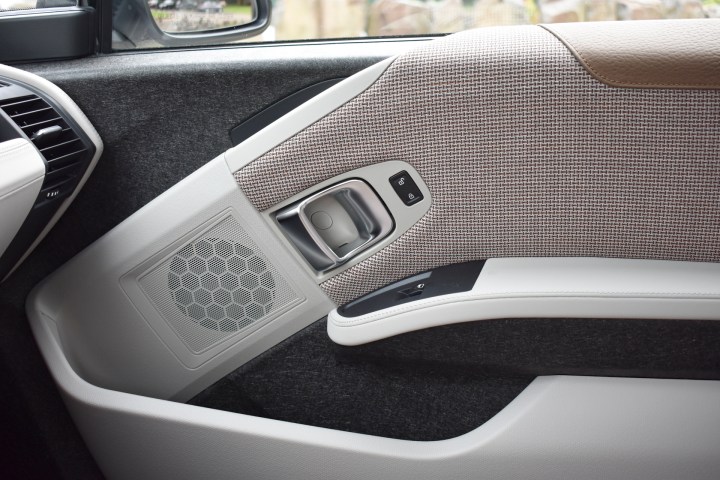- Spirited acceleration
- Nimble handling
- Futuristic design
- Built with sustainable materials
- Lack of range
- Limited tech
- Harsh ride
- Limited rear-seat and cargo space
- Price
It’s May 2014, and we’re on a rooftop in New York City. BMW has just unveiled the i3, its revolutionary new electric car. Executives kvell about how the i3 isn’t just any car, it’s a reinvention of what a BMW can be. It’s a luxury car designed for a future of overcrowded cities and increased environmental awareness. It looks like nothing else BMW has ever made.
Fast forward to the present, and the i3 is no longer a vision of the future. The pint-sized BMW has been on sale for several years, gone through multiple revisions, and seen a wave of new electric cars on both ends of the market. Which makes this the perfect time to revisit BMW’s moonshot.
Specifically, we drove the 2019 BMW i3s. With extra power and sportier chassis tuning, the i3s is the variant best suited to live up to BMW’s oft-quoted tagline “The Ultimate Driving Machine.” With a base price of $48,645 and an as-tested price of $54,595 (all prices include a mandatory destination charge, our test car was certainly priced like a traditional BMW. But is it really worthy of that blue-and-white badge?
Groundbreaking design
Even when designers start with a clean sheet of paper, the resulting cars often look a lot like what’s come before. That’s not the case with the BMW i3. BMW didn’t just try to make an electric version of an existing type of car. Its designers re-thought everything in order to make the ultimate city car.
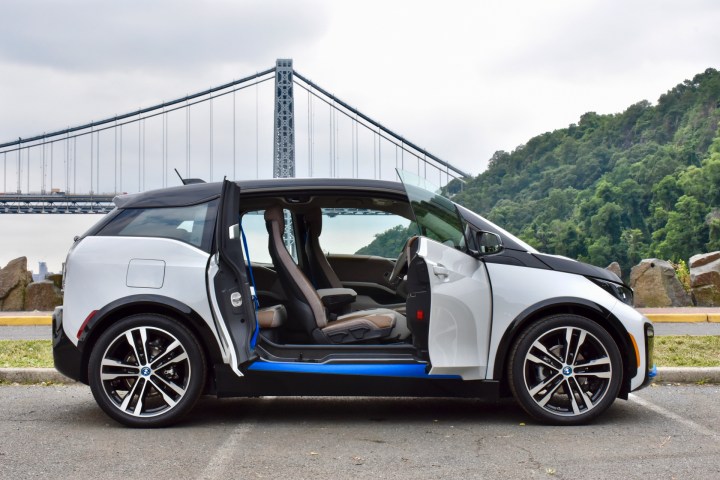
The i3’s shape is part SUV, part Smart car. The BMW lacks a prominent hood and both front and rear overhangs, helping to maximize interior space within a small footprint. But it’s also fairly tall and wide, and the driver sits up high, providing a more commanding view of the road than the average small car. It may all be in the name of practicality, but these design elements also make for a car that — even five years after its launch — looks like nothing else on the road. Even the wheels are unusual: They’re large in diameter but very thin, almost like oversized bicycle tires. That helps reduce the car’s frontal area, making it more aerodynamic.
That out-of-the-box thinking isn’t just skin deep. Like the BMW i8 sports car, the i3’s body shell is made from carbon-fiber-reinforced plastic (you can even see it when you open the doors). Carbon fiber is both lightweight and strong, but it’s also very expensive and difficult to work with. That’s why the material’s use is primarily limited to race cars and exotic supercars. BMW’s process of combining carbon fiber with plastic maintains the material’s benefits, but also makes it cheaper and easier to mass produce. The i3 also has aluminum subframes that hold its suspension and electric motor, which mounted in the rear.
The i3 may have a design from the future, but its tech is already aging.
The i3 doesn’t have an ordinary interior, either. BMW felt an electric car should be made with sustainable materials, so it used open-pored, unbleached eucalyptus for the wood trim (it has the advantage of looking like actual wood as well), recycled plastics, and kenaf, a material made from plants. BMW claims over 80% of the materials visible to vehicle occupants are made from recycled or renewable materials, so your eco-friendly credentials will never be in doubt. With its Ikea color palette and (optional) bright blue seat belts, our test car’s interior looked bright and welcoming, starkly contrasting the cave-like atmosphere of some current BMW interiors.
We didn’t enjoy everything about the interior, though. The driver’s seat is so far back (for weight distribution, maybe?) that you feel like you’re sitting in the middle of the car. Instead of making the i3 a two-seater, which would have saved space, or stretching it to fit four full-size doors, BMW tried to split the difference with rear half doors, similar to an extended-cab pickup truck. But the back seats are still tiny, and only really suitable for occasional use.
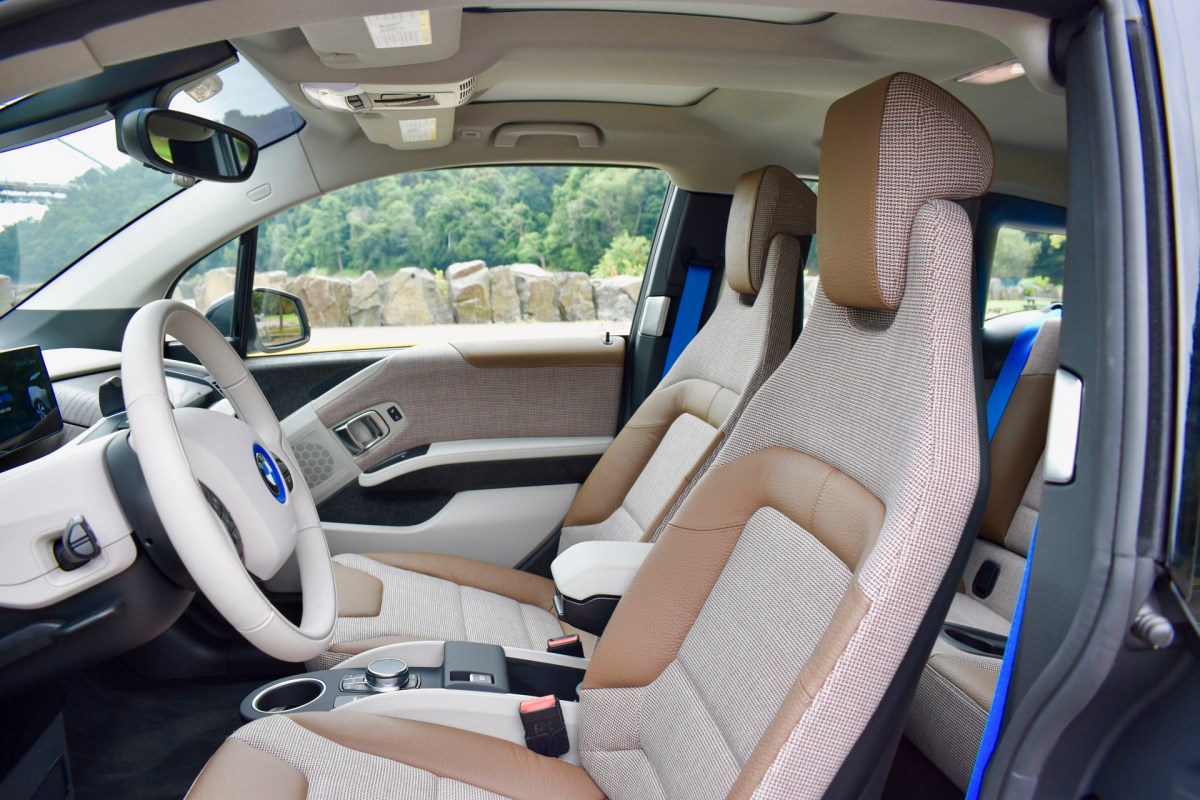
The cargo area is very small as well, which isn’t surprising, as the electric motor sits directly underneath it. A Tesla Model 3 offers more space for passengers and cargo, not to mention cheaper cars like the Nissan Leaf and Chevrolet Bolt EV.
Yesterday’s tech
The i3 may have a design from the future, but its tech is already aging. It’s a testament to the rapid introduction and spread of tech features that the i3 has fallen behind after just a few years on sale.
You would be right to observe that BMW beat Tesla to the punch by replacing gauges with screens. Granted, the i3 uses two screens instead of the Tesla Model 3’s single, central screen. One screen sits in front of the driver and shows critical information like speed, the second handles infotainment functions. It’s not as minimalist as Tesla’s one-screen setup, but in some ways, it works better. It keeps information in the driver’s line of sight, and spreading the information over two screens makes it easier to digest. You also get BMW’s familiar iDrive control knob and analog shortcut buttons for menus, making everything easy to navigate.
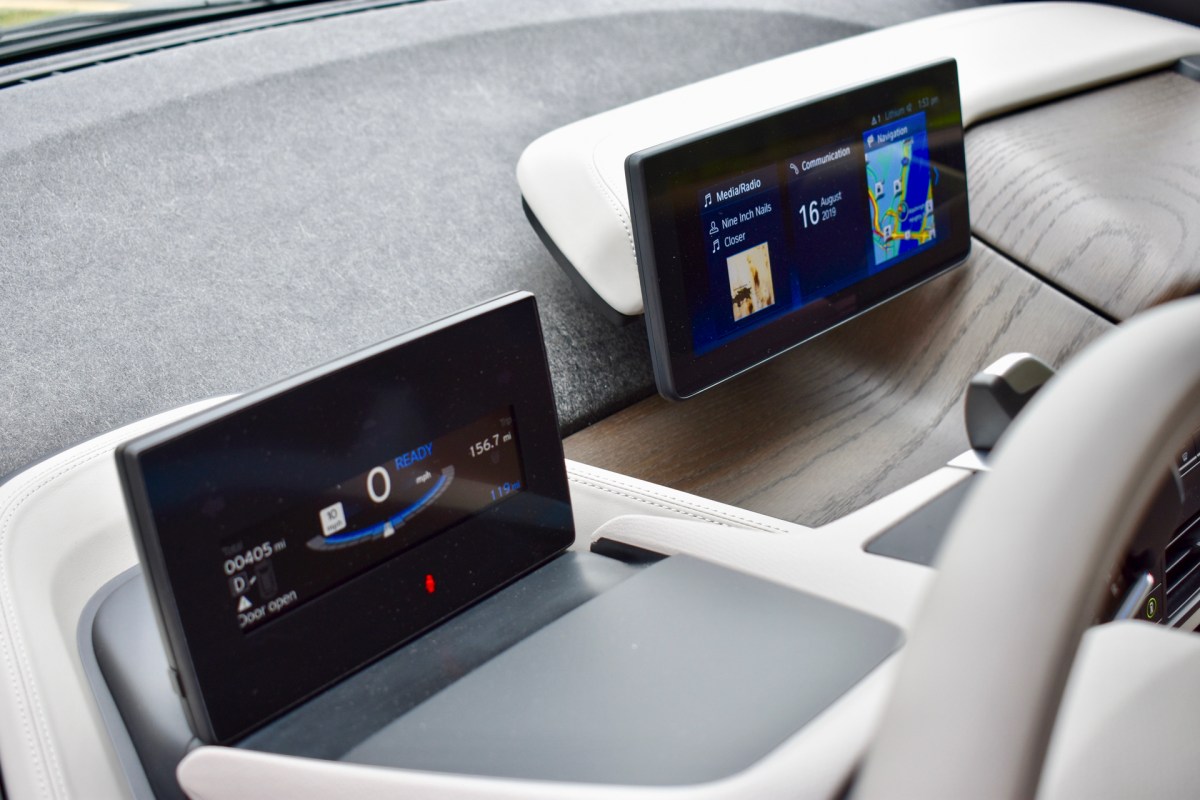
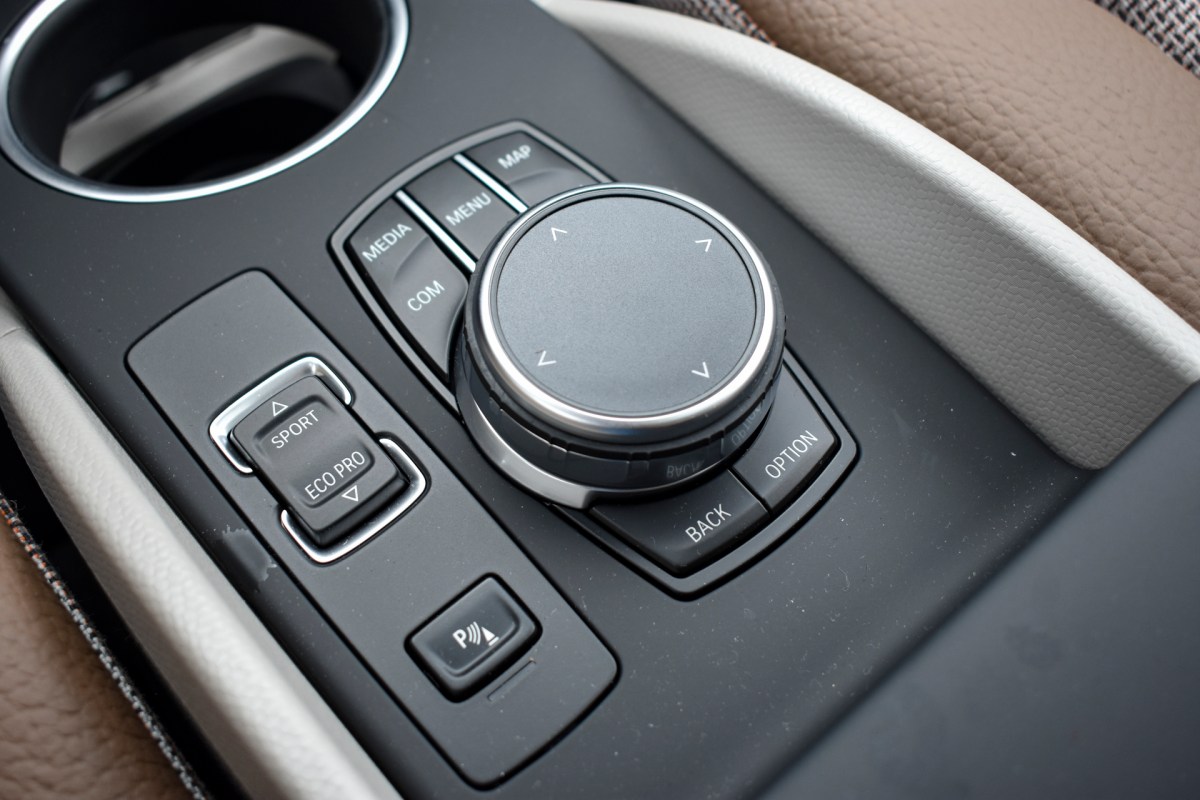
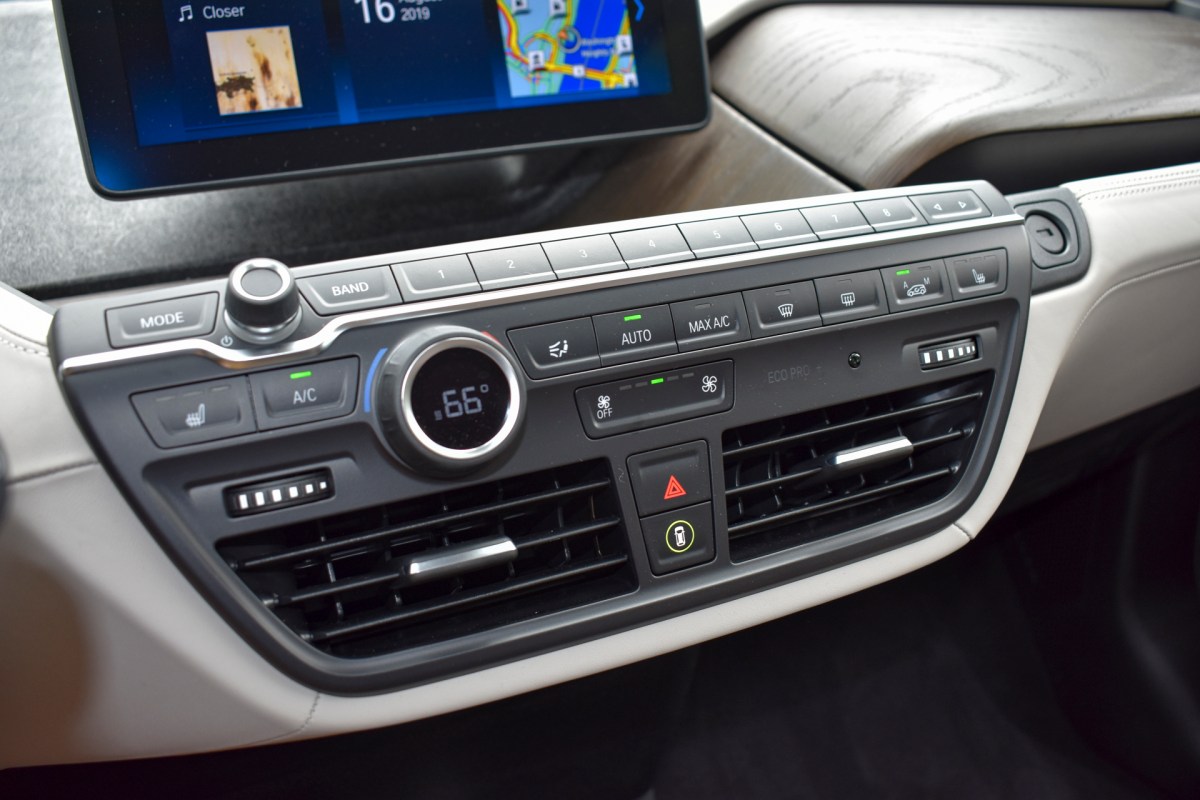
It’s just too bad BMW didn’t find anything good to put on those screens. The i3 is supposed to be a luxury car, but its infotainment features are fairly basic. You don’t get anything you wouldn’t find in a cheaper car. Only Apple CarPlay is available, not Android Auto, and it’s only free to use for one year. BMW does offer wireless phone charging, but it uses a clip to secure the phone that ours (a Moto G7) wouldn’t fit into — even without the case.
The same goes for driver aids. While the Tesla Model 3 is available with Autopilot, and the Nissan Leaf has ProPilot Assist, BMW only offers more basic adaptive cruise control — and even that is an optional extra.
The tech may have been a disappointment, but the driving experience certainly wasn’t.
We drove the i3s back-to-back with a Nissan Leaf and found ourselves missing one of the Nissan’s other features: A 360-degree camera system. That system is an optional extra on the Leaf, but BMW doesn’t offer anything like it at any price. All you get are a rearview camera and parking sensors. You’d think that would be enough for such a small car, but the odd seating position can make the i3 difficult to park.
Seated so far back, we had trouble telling where the front of the car ended and would have killed for a forward-facing camera. BMW does offer a park-assist system that can automatically steer the car into spaces, but it’s only available on the standard i3, not the i3s. That’s beside the point, though. A car designed for use in cities shouldn’t present any problems when parking, period.
Electric hot hatchback
The tech may have been a disappointment, but the driving experience certainly wasn’t. With the i3s, BMW has created the first true electric hot hatchback. With its lightweight construction and rear-wheel-drive setup, the i3 always had the makings of a fun car. The i3s model unlocks some of that potential.
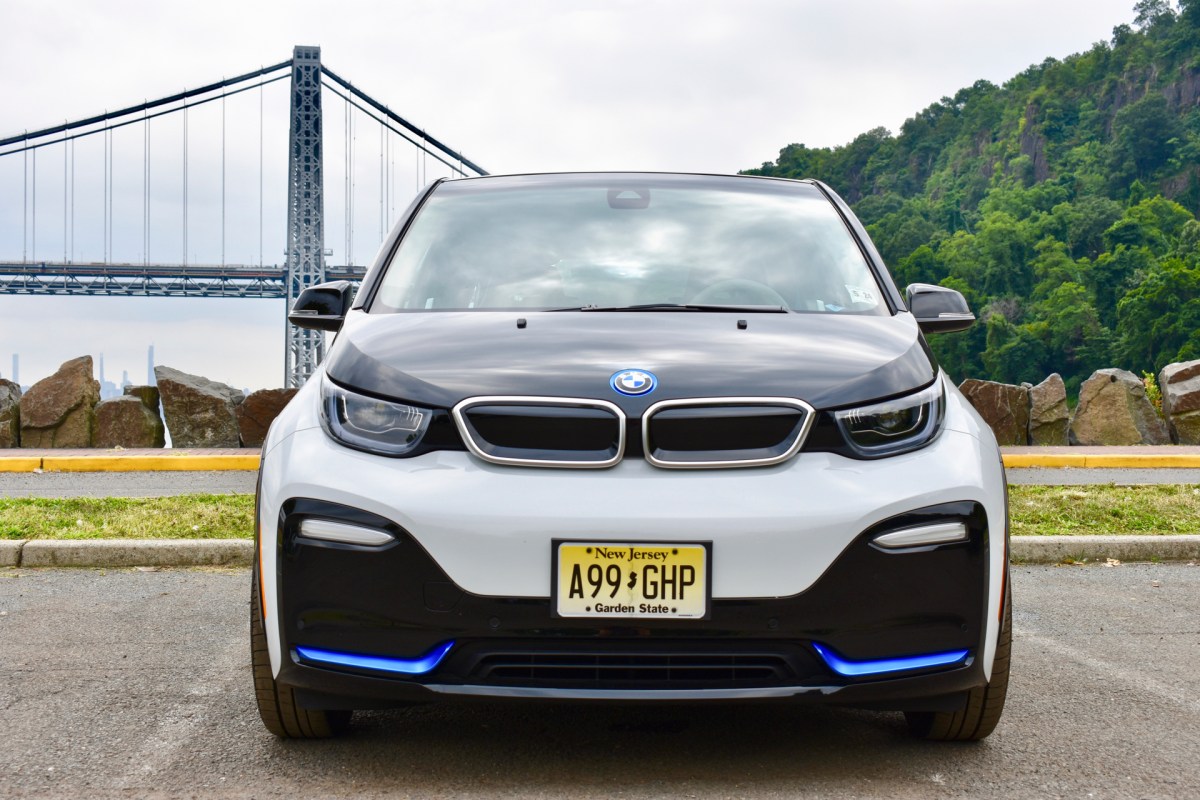
The biggest difference between the i3 and i3s is power. Where the standard model makes 170 horsepower and 184 pound-feet of torque, the i3s makes 184 hp and 199 lb-ft. BMW claims the i3s will do zero to 60 mph in 6.8 seconds, compared to 7.2 seconds for the standard i3. Top speed rises from 93 mph to 99 mph. Those numbers may be an improvement over the standard i3, they’re no match for the competition.
Chevy claims its Bolt EV will do zero to 60 mph in 6.5 seconds, although it doesn’t list top speed. For substantially less money than an i3s, you can also have a Tesla Model 3 Standard Range Plus, which will do zero to 60 mph in 5.3 seconds and reach a top speed of 140 mph, according to Tesla.
You don’t have to go fast to have fun, though. The i3s felt plenty quick in traffic, rocketing away from stoplights like it was being chased by death itself. That’s the magic of instantly-available electric torque, and BMW has taken full advantage of it. Other cars may be quicker, but the i3s was still grin-inducingly quick.
The i3s is a car ahead of its time, but gazing so far ahead into the future, BMW has lost sight of what today’s buyers need.
The i3s is also a riot in corners. Its light weight, small size, and quick-reacting steering make a great combination. And yes, you do notice the rear-wheel drive. It provides just the right amount of rotation to help the car take a set into corners. This chassis helps the driver take full advantage of the electric motor’s instant torque. It’s also a package that you can enjoy at sane speeds.
BMW also gave the i3s a sportier suspension setup than the standard model, and a driver-selectable sport mode to make the most of it. That sharpens up the handling appreciably, but there is a significant penalty in ride quality. The default “comfort” setting isn’t that great to begin with. Regardless of drive mode setting, the ride is harsh and the suspension transmits every road imperfection to the driver’s spine.
The practical stuff
Like its tech, the i3’s range ratings show its age. The 2019 i3 is rated at 153 miles of range by the EPA. That’s a massive increase over the 81-mile rating from the car’s 2014-model-year launch, but many electric cars now offer more than 200 miles of range. BMW does offer a range-extended model, with a small gasoline engine that acts as a backup generator. That version is rated at 200 miles of total range, on both gasoline and electric power. But if you’re willing to buy an electric car that needs gas, you might as well get a full-fat plug-in hybrid, like BMW’s own 330e.
Charging the 42.2-kilowatt-hour lithium-ion battery pack takes 4.9 hours from a 240-volt Level 2 AC source, according to BMW. The i3s is also capable of 50-kilowatt DC fast charging, allowing for an 80% charge in 42 minutes, according to BMW (the Germans are nothing if not precise). BMW uses the Combined Charging Standard (CCS) favored by other European automakers. As with all public charging, the availability of CCS stations varies widely by region.
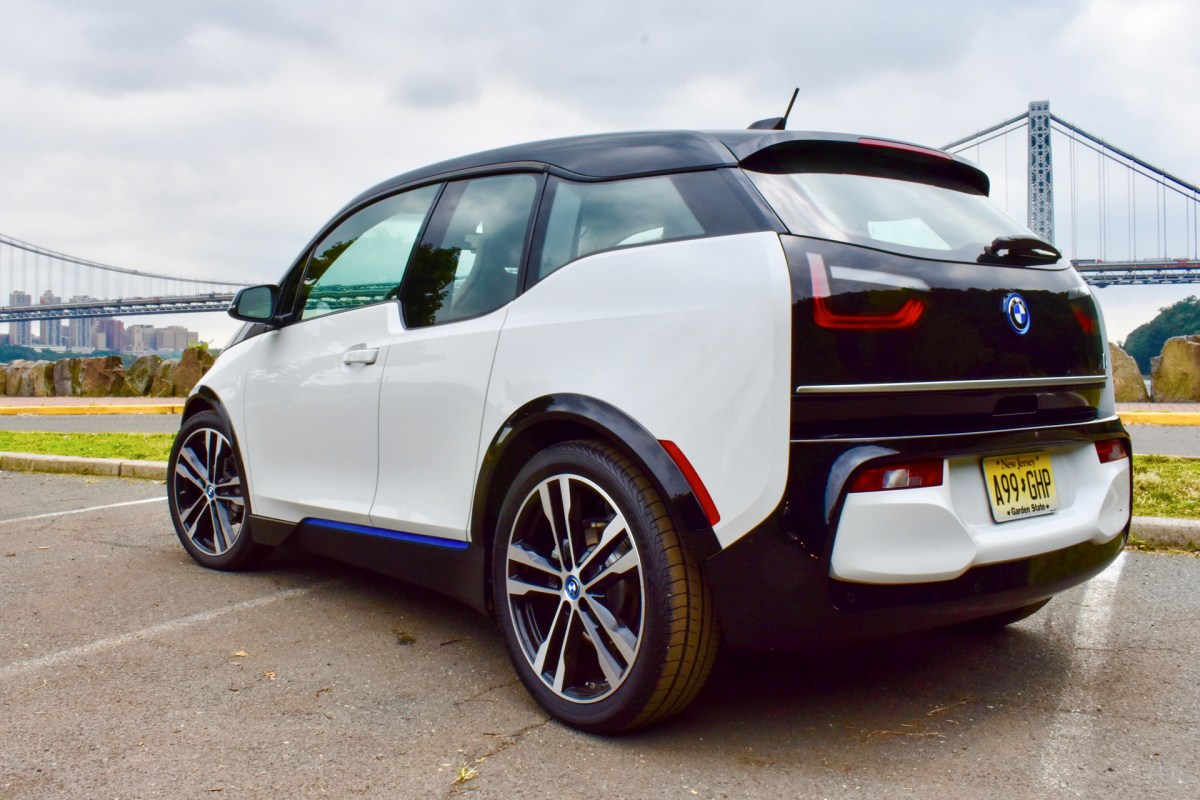
The i3s gets the same new-car warranty as other BMW models, with a term of four years or 50,000 miles, as well as four years of free roadside assistance. The battery pack also gets its own eight-year, 100,000-mile warranty. The standard i3 received an above-average reliability score from Consumer Reports, which can likely be applied to the i3s.
Crash-test ratings also apply to both the standard i3 and the i3s, as there is no structural difference between the two models. The Insurance Institute for Highway Safety (IIHS) gave the i3 its top “good” score for all crash tests, but an “average” for head restraints and seats, and a mid-level “advanced” rating for front crash prevention. The National Highway Traffic Safety Administration (NHTSA), doesn’t have current ratings for the i3.
How DT would configure this car
This is a case of in for a penny, in for a pound. Short range and lack of features make the i3 a poor value at its $45,445 base price, but we would still spend an extra $3,200 to get an i3s. The extra power and suspension upgrades make the i3s worth it, in our opinion. We would also add the optional ($2,350) Tech + Driving Assist package, which includes adaptive cruise control, navigation, and LED headlights that follow the curve of the road. We wouldn’t get the range extender, however. It doesn’t offer enough of a range boost to justify its extra cost or the compromise of relying on a gasoline engine part-time.
Summary
Like the 1934 Chrysler Airflow and 1948 Tucker, the BMW i3s is a car ahead of its time. The i3s incorporates some features – such as its carbon-fiber-reinforced plastic construction — that deserve to be used more widely in the car industry. But by gazing so far ahead into the future, BMW has lost sight of what today’s buyers need. That has put the i3s in a no man’s land. The base Tesla Model 3, Nissan Leaf, and Chevrolet Bolt EV are better all-around cars – and they can be had at a much lower price than the BMW. At the same time, the i3s doesn’t offer enough performance or tech features to justify stepping down from a Tesla Model S, Jaguar I-Pace, or Audi E-Tron. If you aren’t fully committed to going electric, you could also get a pretty nice BMW 3 Series for around the same price as our i3s tester.
Should you get one?
No. The 2019 BMW i3s is a daring design and a lot of fun to drive, but its high price and relatively short range make it a poor value.



